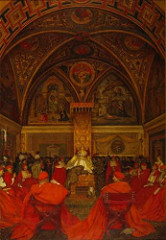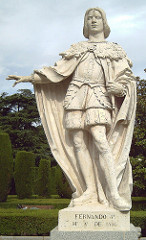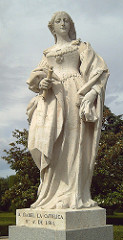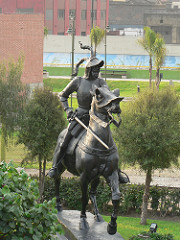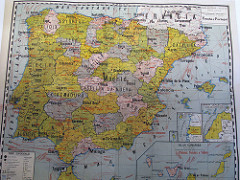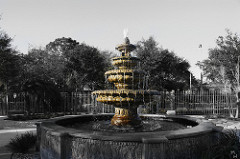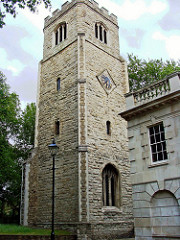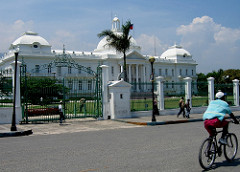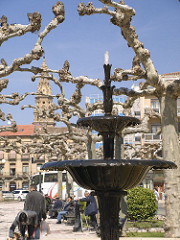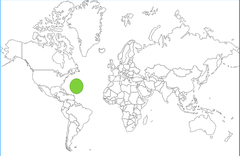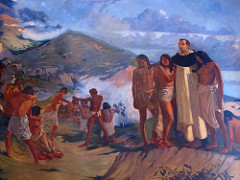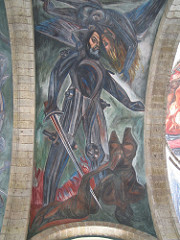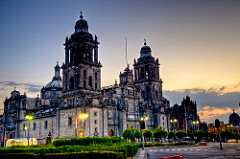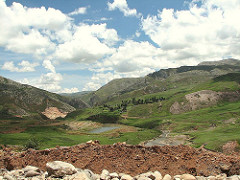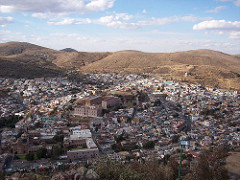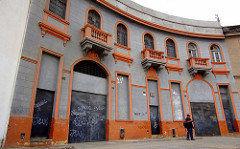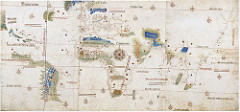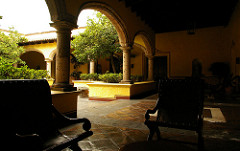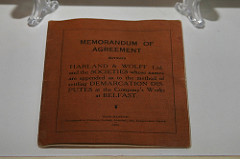Pedro Valdivia
Spanish conquistador; conquered Araucanian Indians of Chile and established city of Santiago in 1541.
Pope Alexander VI
This was the pope that granted power to Ferdinand and Isabella to appoint bishops to the Spanish territories and also settled the argument between Spain and Portugal over South America
Ferdinand of Aragon
Along with Isabella of Castile, monarch of largest Christian kingdoms in Iberia; marriage to Isabella created united Spain; responsible for reconquest of Granada, initiation of exploration of New World.
Isabella of Castile
Along with Ferdinand of Aragon, monarch of largest Christian kingdoms in Iberia; marriage to Ferdinand created united Spain; responsible for reconquest of Granada, initiation of exploration of New World.
Francisco Pizarro
Spanish explorer who conquered the Incas in what is now Peru and founded the city of Lima, took gold, silver and enslaved the Incas in 1532 .
Iberians
The natives or inhabitants of the Iberian peninsula, where Spain and Portugal are located. They conquered much of Latin America between 1450 and 1750. During this time the Catholics kicked the Muslims out of the Iberian Peninsula in the Reconquista.
Sultanate of Granada
The Muslim kingdom that Spain later conquested. In 1502, the Muslims were forced to convert to Christianity or be expelled or killed.
Francisco Cordoba
Explorer who arrived in Yucatan by orders of Velazquez, credited with founding Nicaragua. Was captured and beheaded.
Ponce de Leon
Discovered and claimed Florida (Land of the Flowers) for Spain while looking for the Fountain of Youth, The place where he first landed was later settled by the Spanish. In 1565, St. Augustine became the first permanent Spanish settlement in what is now the United States. It is the oldest city in our country.
St. Augustine
Founded in 1565, the oldest continually inhabited European settlement in United States territory
Hispaniola
First island in Caribbean settled by Spaniards; settlement founded by Columbus on second voyage to New World; Spanish base of operations for further discoveries in New World.
Ecomienda
In the spanish colonies, the grant to a spanish settler of a certain number of indian subjects, who would pay him tribute in goods and labor.
Encomendero
The holder of a grant of Indians who were required to pay a tribute or provide labor. Was responsible for their integration into the church.
Santo Domingo
Sugar-rich island where Toussaint L'Ouverture's slave rebellion disrupted Napoleon's dreams of a vast New World empire, now known as Haiti.
Tainos
Also called the Caciques. A people indigenous to the Caribbean, and the largest people living there for a while. They were pretty chill; they were into woodcarving, big houses, hammocks, and ceremonial ballgames instead of war.
Caribbean
First area of Spanish exploration and settlement; served as experimental region for nature of Spanish colonial experience; encomienda system of colonial management initiated here.
Caribs
A people indigenous to the Caribbean. They were pretty aggressive. They were known for their dug-out canoes, which made them a seafaring people. When the Europeans arrived in the 16th century, they had pretty much intermarried with the Tainos.
Bartolome de Las Casas
Dominican friar who supported peaceful conversion of Native American population of Spanish colonies; opposed forced labor and advocated Indian rights, He convinced Charles I to signs the "New Laws" prohibiting Indian slavery and attempted to put an end to the encomienda system by limiting ownership of serfs to a single generation.
New Laws
A royal edict that helped establish that Indians were human, capable of salvation, and worthy servants of the Crown. It happened in 1542, and helped outlaw Indian slavery as well. It is significant because it determined the human aspect of the Indians as well as freeing them, or helping to, from slavery.
Hernan Cortes
Led expedition of 600 to coast of Mexico in 1519; conquistador responsible for defeat of Aztec Empire; captured Tenochtitlan
Moctezuma II
Last Aztec emperor, overthrown by the Spanish conquistador Hernan Cortes.
Mexico City
Capital of New Spain; built on ruins of Aztec capital of Tenochtitlan.
Tenochtitlan
Capital of the Aztec Empire, located on an island in Lake Texcoco. Its population was about 150,000 on the eve of Spanish conquest. Mexico City was constructed on its ruins.
New Spain
Spanish colonial possessions in Mesoamerica in territories once part of Aztec imperial system.
Francisco Coronado
A Spanish soldier and commander; in 1540, he led an expedition north from Mexico into Arizona; he was searching for the legendary Seven Cities of Gold, but only found Adobe pueblos.
Araucanians
The indigenous group native to chile, resisted many attempts made by the more organized incas to conquer them, and also killed Pedro de valdivia when he tried to take over chile. The ___ held off the Spanish for a considerable amount o time
Ines Suarez
Mistress of the conqueror of Chile, fundamental in attacks on indigenous populations (Pedro Valdivia)
Juan Sepulveda
He was the adversary of Bartolomé de las Casas in the Valladolid Controversy in 1550 concerning the justification of the Spanish Conquest of the Indies.Was the defender of the Spanish Empire's right of conquest, of colonization, and of evangelization in the so-called New World.
Mita
Labor extracted for lands assigned to the state and the religion; all communities were expected to contribute; an essential aspect of Inca imperial control.
Potosi
Located in Bolivia, one of the richest silver mining centers and most populous cities in colonial Spanish America.
Huancavelica
Location of greatest deposit of mercury in South America; aided in American silver production; linked with Potosí.
Zacatecas
A major silver mine of Mexico opened in 1540s
Consulado
Merchant guild of Seville; enjoyed virtual monopoly rights over goods shipped to America and handled much of the silver received in return.
Treaty of Tordesillas
Signed in 1494 between Castile and Portugal; clarified spheres of influence and rights of possession in New World; reserved Brazil and all newly discovered lands east of Brazil to Portugal; granted all lands west of Brazil to Spain.
Haciendas
Rural estates in Spanish colonies in New World; produced agricultural products for consumers in America; basis of wealth and power for local aristocracy.
Letrados
University-trained lawyers from Spain in the New World; juridical core of Spanish colonial bureaucracy; exercised both legislative and administrative functions
Line of Demarcation
An imaginary line that the Pope Alexander VI drew through the New World. The land east of the line belonged to Portugal; the land west of the line belonged to Spain.
Recopilacion
Body of laws collected in 1681 for Spanish possessions in New World; basis of law in the Indies.
Council of the Indies
Body within the Castilian government that issued all laws and advised king on all matters dealing with the Spanish colonies of the New World.
